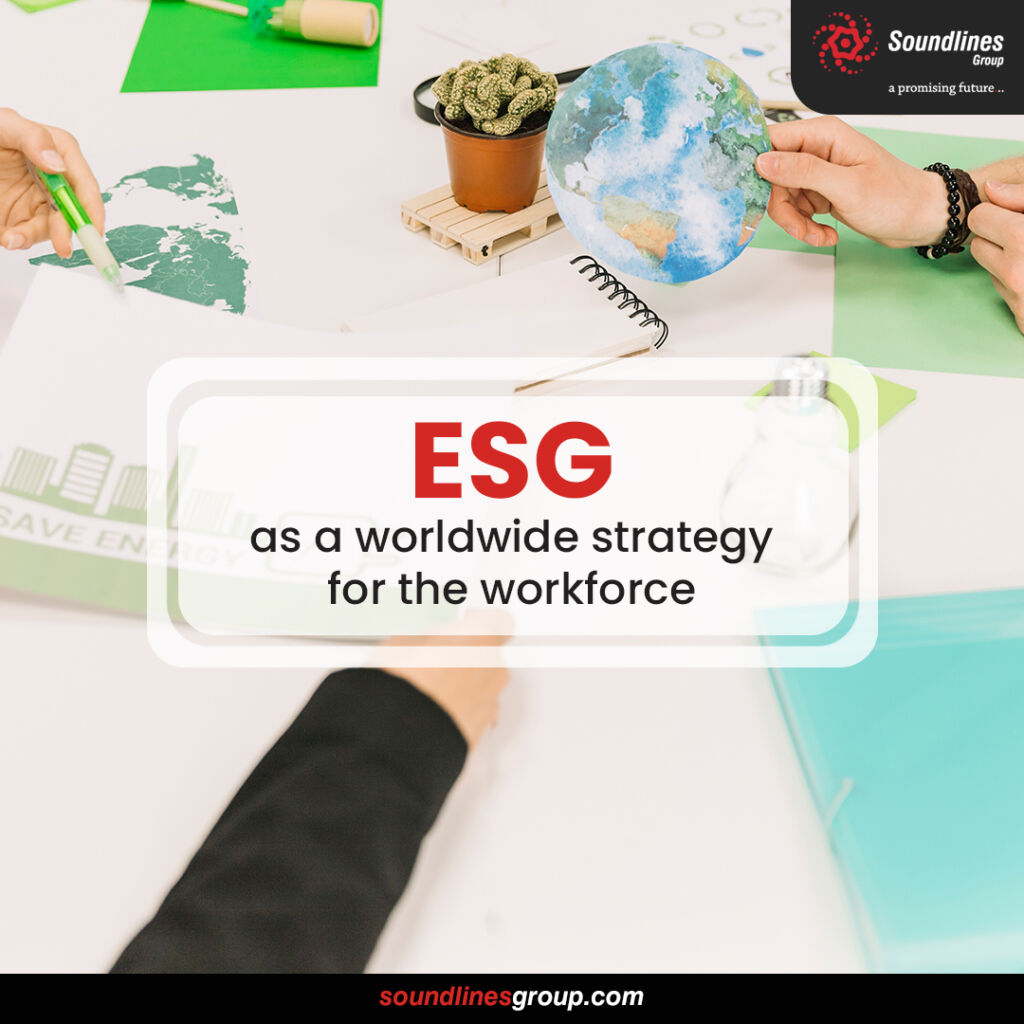As a result of the COVID-19 epidemic, corporate executives have been compelled to reconsider their personnel recruitment, retention, and development strategies. As we have seen with previous pandemics in recent histories, such as HIV/AIDS in the 1980s, it is common for businesses to prioritize short-term aims above long-term resilience.
Unfortunately, this has gotten many enterprises into problems over the last decade. According to research, companies with ESG (environmental, social, and governance) plans are better positioned to deal with this transition than those without such strategies.
What exactly is ESG?
ESG is a methodology for identifying and managing ESG risks and opportunities throughout an organization’s operations. Environmental, social, and governance variables may impact operational performance and financial returns. Yet, ESG problems may serve as a window through which corporate performance can be viewed from a broader perspective than economic ones. ESG concerns are actionable since they may directly impact the business image, brand value, consumer loyalty, staff retention rates, and investor confidence.
Serving the three pillars of ESG
Sustainability is essential to your global labor strategy. People, planet, and profit are the three foundations of your company to which the ESG components are intrinsically tied.
They influence how you handle every area of your organization, including recruitment, retention, employee engagement, and performance management programs. ESG involves more than simply corporate responsibility; it also involves long-term profitability. ESG practices aid businesses in retaining top personnel by fostering a culture centered on the beneficial effect that:
- Promotes employee health
- Increases financial performance by lowering expenses associated with safety incidents/accidents and property damage caused by environmental challenges (e.g., storm damage)
- Eliminates legal costs associated with lawsuits filed by workers alleging discrimination based on age or other protected factors such as race/ethnicity or gender identification.
How can the three ESG factors help a successful global strategy?
- Environment
The environment is among the most important factors to consider when developing a successful global workforce strategy. Several potential workers are worried about their carbon footprint in the present day. With the current climate catastrophe, it is not surprising that job seekers choose organizations with the smallest environmental footprint.
There are several means through which organizations may assure environmental compliance. If you want to guarantee that your organization complies with sustainable development standards, examine the following:
- How can a global labor strategy based on sustainable manufacturing be established?
- What kind of sources of energy would our global facilities require?
- How can we reduce water use while maintaining product quality?
- How can we repurpose waste material from other industrial processes?
- Social Ethics and Obligations
The foundations of a responsible investor are social ethics and obligations. Positive business results are driven by social impact; pleased workers and investors improve business outcomes. The primary ESG drivers include:
Environmental, social, and governance (ESG) aspects must be included in company planning and performance monitoring.
The investment process should incorporate all stakeholders, including workers, management, and consumers.
Investors must have a long-term perspective rather than focusing just on short-term gains.
To ensure that you meet your social ethics and responsibilities as an investor, you should base your investment decisions on solid financial metrics; engage with companies to comprehend ethical and social issues; monitor ESGs over time; measure and report success against goals; and commit to continuous improvement.
- Governance (political, regulatory, legal, and ethical) (political, regulatory, legal, and ethical)
Corporate governance is the governing principle. It depends on how you play and how you play with others. When discussing governance challenges, we refer to the political, regulatory, legal, and ethical factors that decide whether your organization achieves its objectives.
Managing global workforces requires familiarity with foreign laws (including tax implications), cultural variations in business conduct (such as negotiating contracts or handling employee issues), and local traditions in each country where you do business.
Control your global workforce successfully demands great leadership abilities at all stages of your organization – individuals who comprehend how their actions affect others around them domestically and globally are crucial to your success!
How can a global workforce plan be developed based on the three ESG pillars?
ESG concerns are obstacles that affect all industries and businesses, regardless of size or location. These difficulties demand local solutions that may be achieved through company practices incorporating sustainability into their fundamental business strategy. When businesses understand these concerns better, they understand they are not alone in confronting them; they have colleagues across sectors and regions working on comparable problems with diverse solutions.
The ESG pillars facilitate the development of a global workforce plan via three major steps:
- Map and identify cultural value
What are the organization’s most significant values?
How do you define “local” in this context?
- Establish recruiting standards and processes based on ESG factors for each site.
How can we utilize our current data sources to uncover local employment opportunities and match them more closely with our ESG-based objectives?
How might these techniques be used to boost our appeal to talent?
- Create an ecology that encourages change and growth.
How can we facilitate talent acquisition across all locations?
What kind of resources are required to support these initiatives?
What are the technological and operational requirements for scaling?
Takeaway for Employers
Evaluating your company’s human resource requirements may be time-consuming, but it is worthwhile. Without a production, marketing, and sales strategy, you would not start a company. Similarly, you must have a good strategy for administering human resources functions inside your firm. While a competent human resources program is essential for all firms, it is often secondary to the company’s main business role. Small and medium-sized businesses may cost-effectively maintain a competent and compliant human resources department by outsourcing HR activities.
Are you looking to build and manage an international talent pipeline for your business? Are you looking to hire overseas manpower for your company?
Click here to schedule a callback from our HR management experts.
